simple but sophisticated and elegant streetscape
/Approaching Copenhagen from the north - down the main coast road through Hellerup - you enter the old city at Østerport station where the road divides: the road to the right, Store Kongensgade, runs in front of the important and distinctive Nyboder housing scheme, and leads to a main square at Kongens Nytorv and the road to left, Grønningen, follows the western edge of the fortress, Kastellet, to the inner harbour, the royal palace and the grand 18th-century houses of Frederiksstaden. This split in the roads forms a very sharp triangle, now covered with grass and with just two statues and three trees, before they continue on either side of blocks of apartments dating from the late 19th and early 20th century. The first - a substantial apartment building, with a narrow but grand entrance front facing the triangle - is dated in bold numerals 1910 and is now owned by M Goldschmidt Holdings A/S. There is a short cross street in front of the building that is now cobbled but there are no pavements or pedestrian access along the long sides of the triangle.
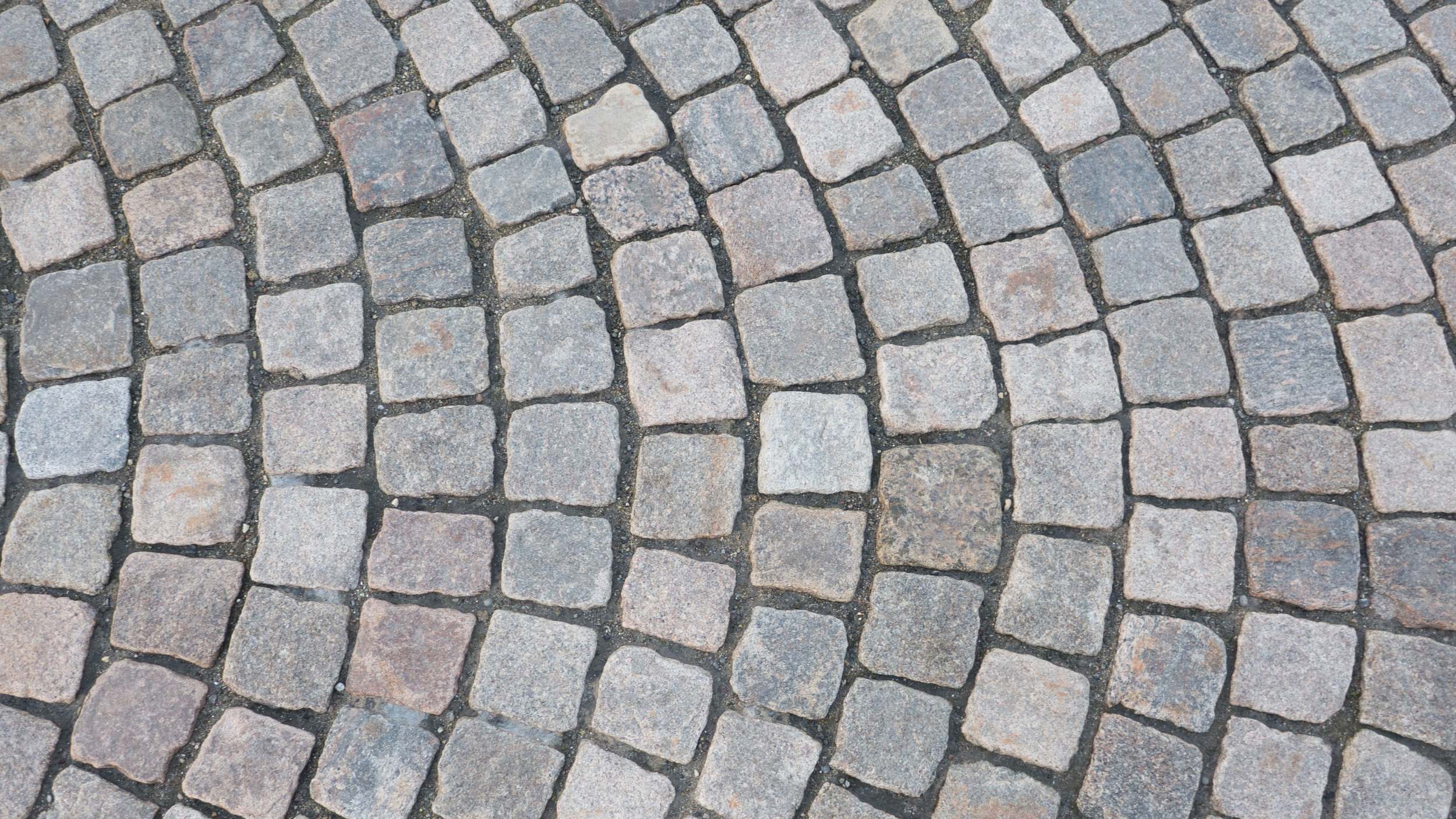
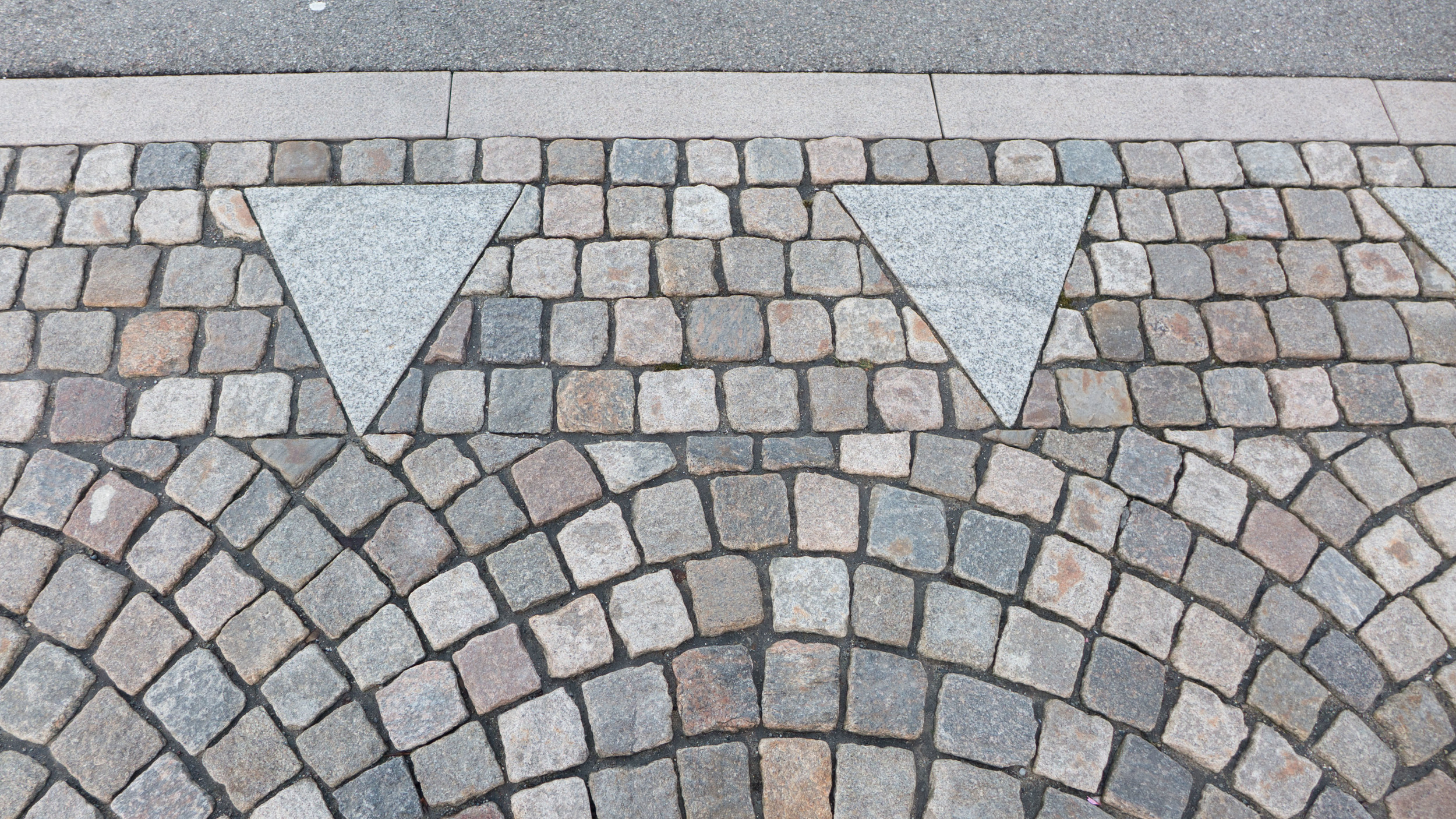
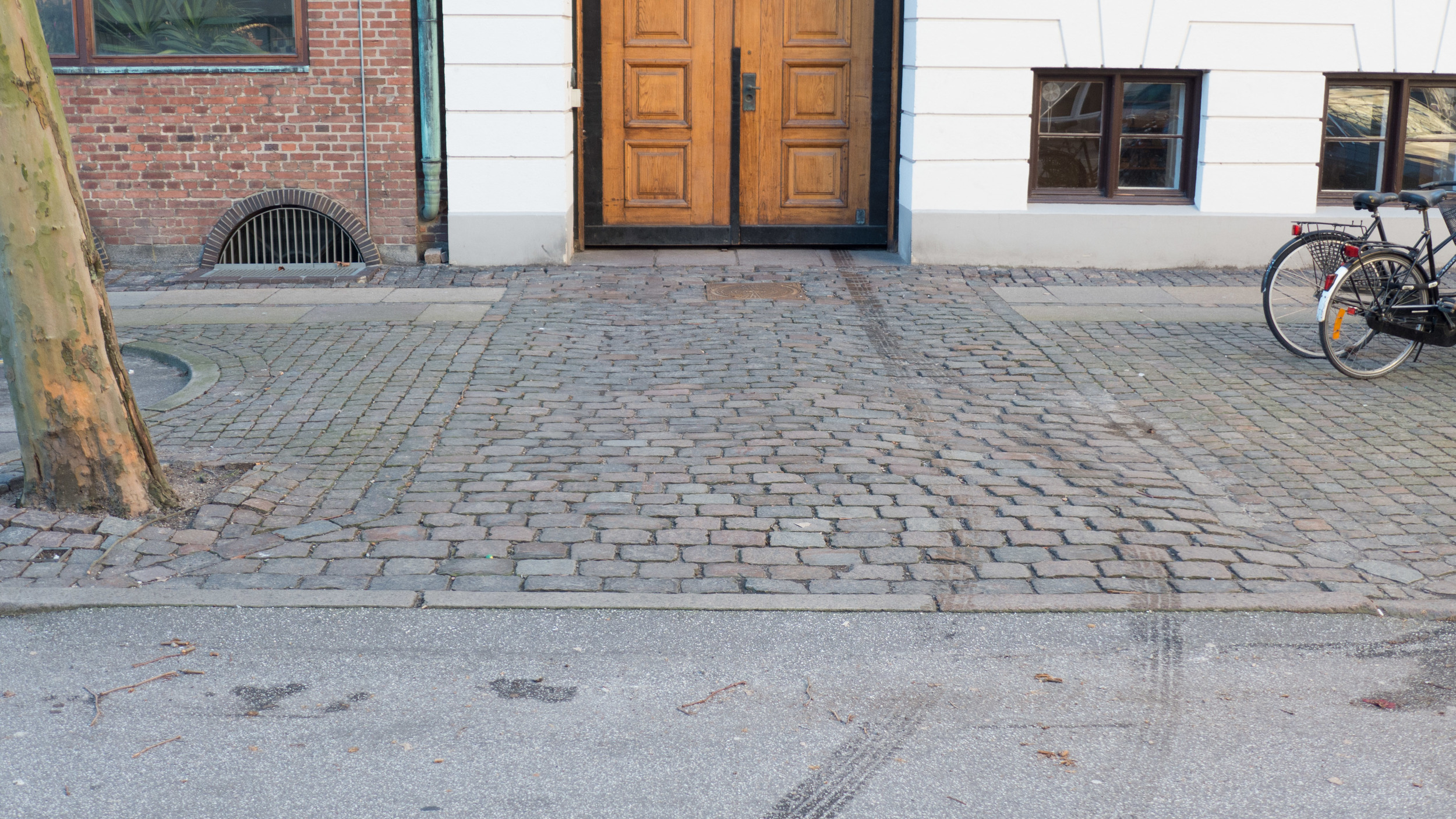
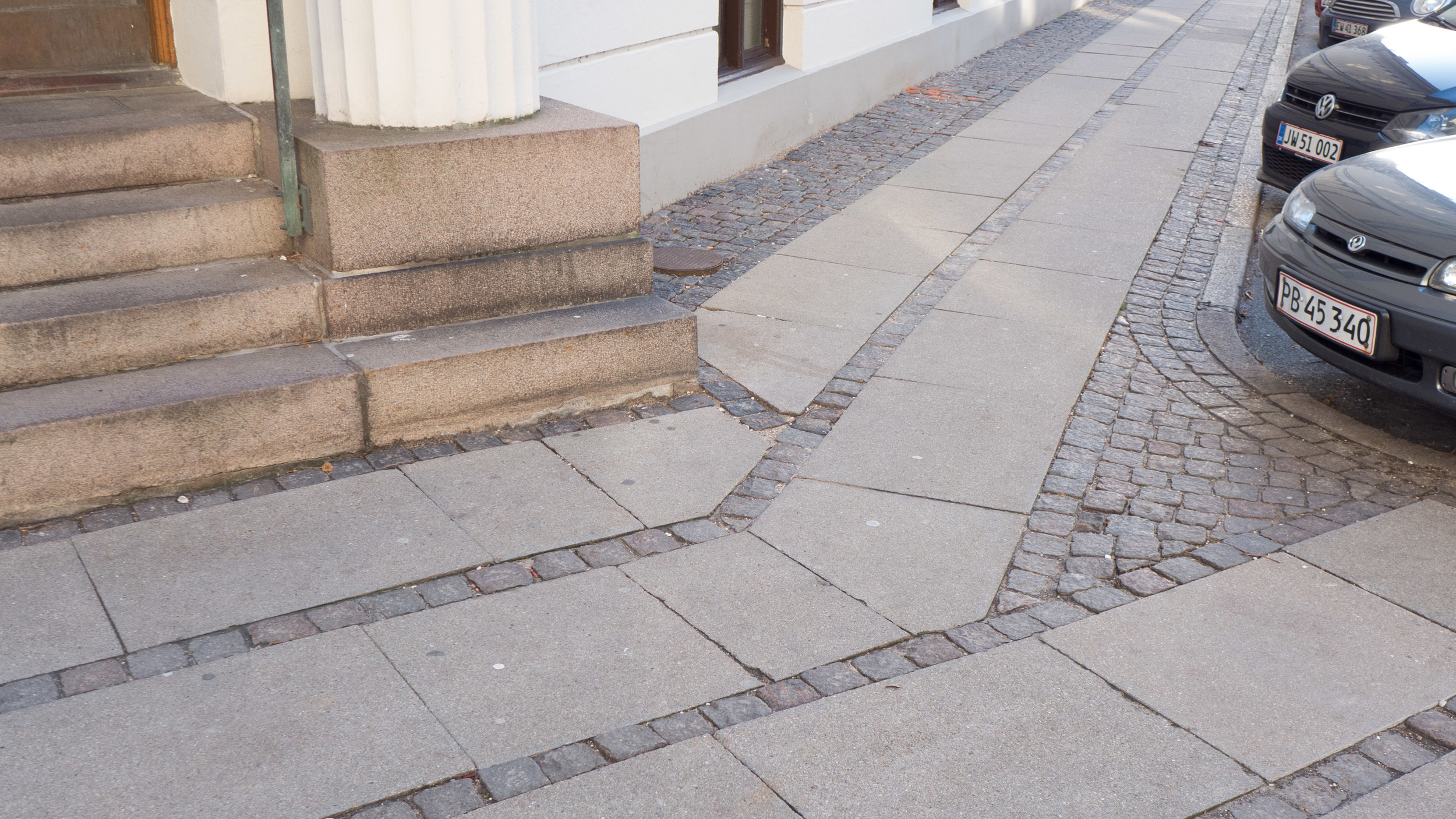
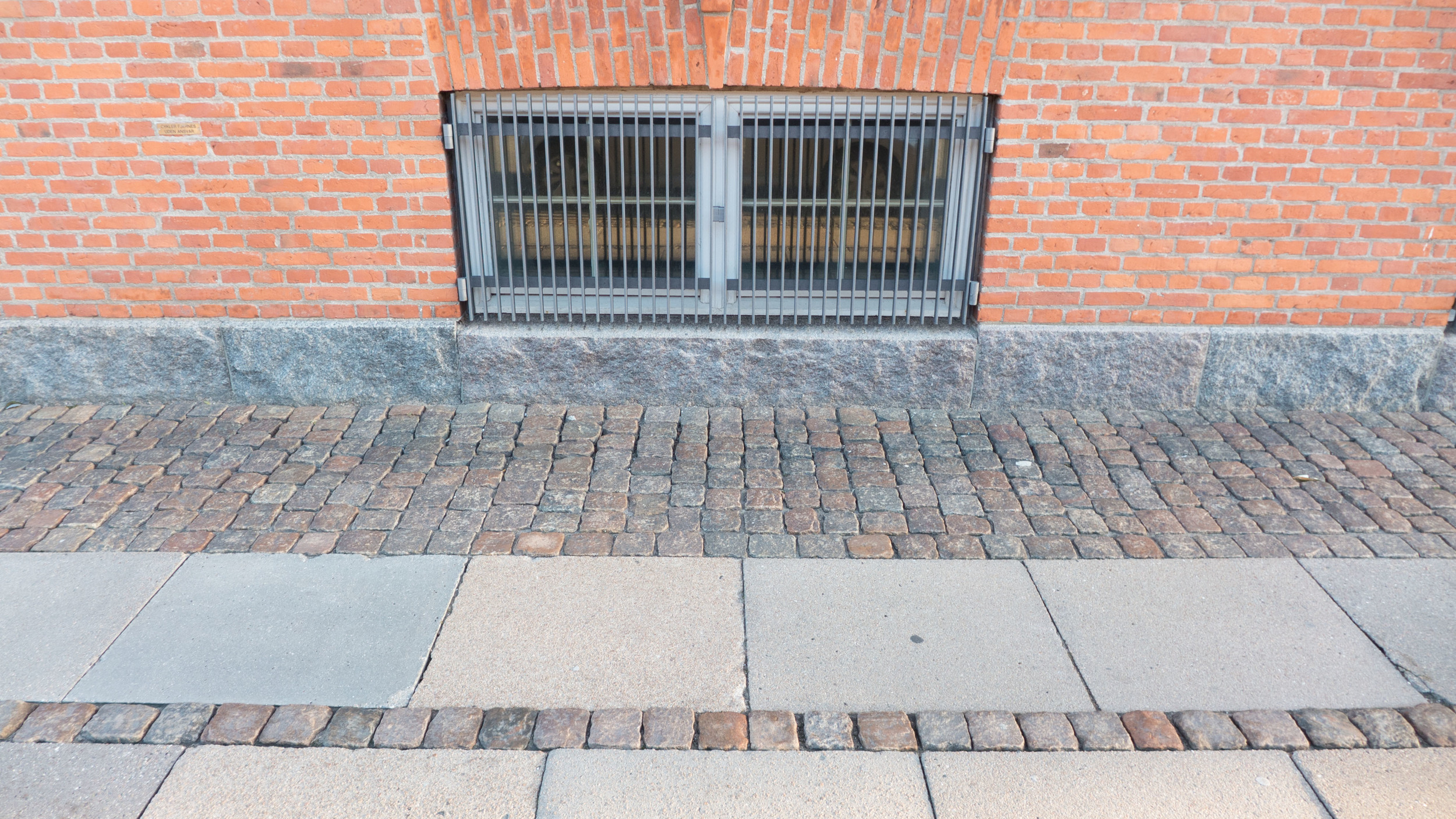
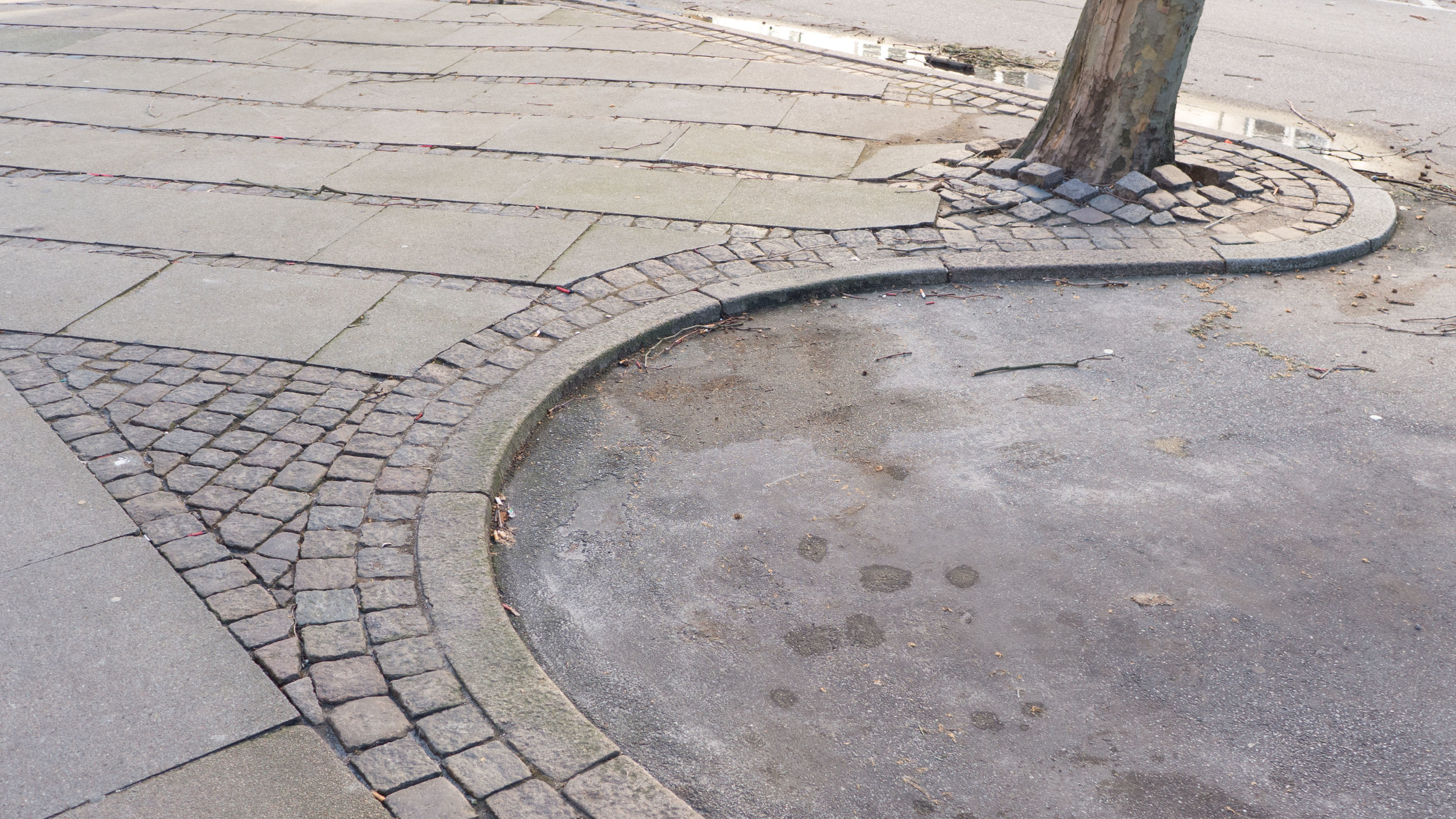
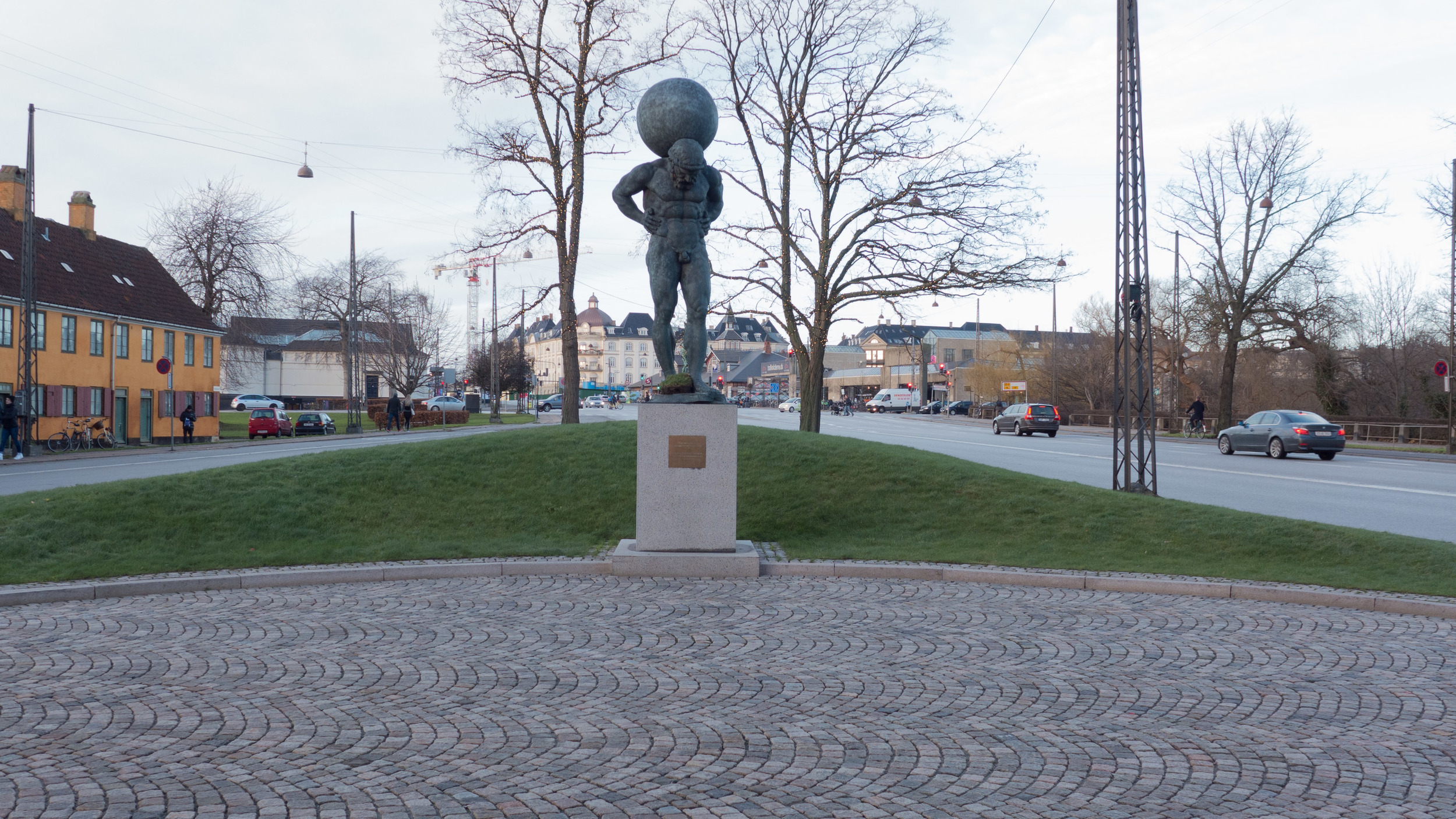
Basic elements of the hard landscaping are determined by the form of paving in this part of the city with stone kerbs and pathways formed with two or three strips of relatively narrow rectangular paving stones, set with their long side in the direction of the pathway and divided by lines of single square stone cobbles. There are wider bands of cobbles against the front of the buildings and bands or aprons of cobbles cutting across the pavement to mark doorways and arches into courtyards. The elements are simple but are crucial to unify the appearance of the neighbourhood but all executed to the highest possible standard. On the triangle the cobbles in front of the entrance to the apartment are set in subtle curves forming scallops and there is a very careful attention to details ... the line of triangles marking the stop line for traffic leaving the cross street to join the main roads, usually simply painted white, are here formed in large triangles of light stone.
The two statues on the triangle are very different in style and mood.
At the apex is a bronze figure of a youth on horseback, the horse facing north but the rider twisting to face west. There is also a dynamic feeling of movement from the horse with hooves set closely together as if about to leap forward and this is accentuated by the tall but narrow stone plinth on which the sculpture is set. The work, representing the figure of Pan riding Pegasus, dates from 1939 and is a monument to the composer Carl Nielsen by his wife, the artist Anne Marie Carl-Nielsen.
At the bottom of the triangle, set in front of the apartment, is a statue of Titan carrying the world on his shoulders by Nicolai Outzen Schmidt - a sculpture about strength and power and domination.
From the north apex of the triangle to its base at the apartment building is 70 metres but in that distance the roads on either side drop down by over a metre. In the earlier planting of this area, the south end of the triangle was banked up and densely planted. Now the central long axis is level, only dropping down with a low bank around the Titan sculpture to form a slight amphitheatre. This simple profile achieves much: when viewed from either pavement it means that the tarmac and the traffic on the roads has much less impact - both seem to drop rapidly away so that the impression is that the triangle of grass, when seen from the east pavement of Grønningen, forms an appropriate plinth or green setting for the important buildings of the Nyboder housing scheme on Store Kongensgade and when viewed from the west pavement, in front of those houses, the tarmac of Grønningen disappears and the grass of the triangle runs through visually into the greenery of the Kastellet embankments to form an appropriate backdrop to the Nielsen monument. The cars do not disappear but the impact of the wide tarmac roads is significantly reduced.
Here the design of the urban landscape is elegant and, in a clever and subtle way, enhances a much broader area - nearly every day I walk along these roads so I feel I can make that claim with justification. It illustrates the paradox that when a lot of thought and effort and money is invested in a project to get the design right, very few people comment; get the design wrong, cut corners, and people notice and criticise.
Some good design can start from a simple idea that is simply executed but there is also good design that is deceptively simple so it hides well - or at least chooses not to flaunt - the skill and effort and thought required to achieve what has been done. Much landscape architecture comes within the second group as often it is commissioned to act as a foil to buildings or to provide a place for functions or activities so it should not distract or intrude either visually or physically.
The work was undertaken in 2010.
Landscape architects: Sonja Poll and Knud Lund-Sørensen.































